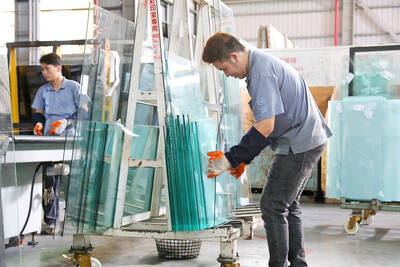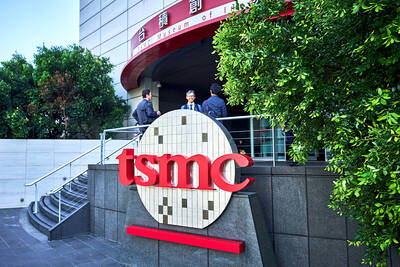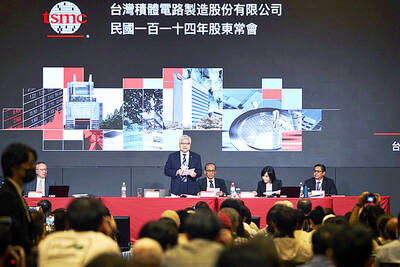Samsung Electronics Co Ltd is on track to post its second consecutive year of record earnings as a rebound in its semiconductor business shields the South Korean tech giant from a slower smartphone market.
The world’s biggest memory chipmaker is likely to see its semiconductor earnings charge to a three-year high — a much-needed shot in the arm — just as sales of its flagship Galaxy S4 smartphone begin to flag, analysts say.
The global chip market has rallied since late last year due to a supply crunch caused by years of cautious investment to support prices, and conversion of factory capacity to produce more profitable chips used in smartphones and tablets.
The market further tightened following a fire early last month at a Chinese plant owned by SK Hynix, the world’s No. 2 chipmaker. The drop in supply helped divert customers to Samsung, whose heavy investment in cutting-edge chipmaking technologies has made it head and shoulders above smaller rivals like Micron Technology Inc.
“As of now, there is no real competitor for Samsung in the [memory] chip business,” said Lee Seung-woo, a tech analyst at IBK Investment & Securities.
“This dearth of players is expected to allow Samsung to post considerable operating profits throughout this year and next year, even if demand flags,” Lee said.
Samsung is estimated to post an operating profit of 38.5 trillion won (US$35.85 billion) this year, up a third from last year, according to a survey of 45 Thomson Reuters analysts. The company said yesterday operating profit is likely to reach a record 10.1 trillion won in the third quarter.
Contract dynamic random access memory (DRAM) chip prices jumped 9 percent in the second half of last month from the first half of that month, while spot prices soared 37 percent.
UBS estimates that the supply of DRAM chips by SK Hynix would shrink by 14 percent in the fourth quarter, plunging the overall DRAM market into a supply deficit of about 7 percent. The South Korean firm aims to fully restore operations next month.
Samsung estimated third-
quarter operating profit rose 25 percent from a year earlier, the slowest since the third quarter of 2011 when profit shrank 11 percent.
Samsung’s mobile devices business has helped the company report a record profit every quarter since last year, except the first three months of this year.
The division, which generates two-thirds of the company’s total earnings, is stalling as sales of the Galaxy S4 slow and the high-end market rapidly saturates, analysts say.
“The concern that high-end smartphones could see slower growth is a valid one, but Samsung has both the speed and fast-follower tendencies of Zara and a portfolio spanning high and low-end products, as well as components such as a brand like Swatch,” Lee said.
Barclays estimates S4 smartphone sales will have dropped to 16 million sets in July to last month from about 20 million in the two months following its late April debut.
Sales may slip further to 13 million sets in the fourth quarter, Barclays said.
Samsung is widely expected to have sold 86 to 88 million smartphones in the third quarter, up from 76 million in the second quarter, as the company increased shipments of cheaper models to emerging markets.
Profits at its mobile division are seen at 6.4 trillion won, better than the second quarter’s 6.3 trillion won, but down from a record 6.5 trillion won in the first three months of the year.

CAUTIOUS RECOVERY: While the manufacturing sector returned to growth amid the US-China trade truce, firms remain wary as uncertainty clouds the outlook, the CIER said The local manufacturing sector returned to expansion last month, as the official purchasing managers’ index (PMI) rose 2.1 points to 51.0, driven by a temporary easing in US-China trade tensions, the Chung-Hua Institution for Economic Research (CIER, 中華經濟研究院) said yesterday. The PMI gauges the health of the manufacturing industry, with readings above 50 indicating expansion and those below 50 signaling contraction. “Firms are not as pessimistic as they were in April, but they remain far from optimistic,” CIER president Lien Hsien-ming (連賢明) said at a news conference. The full impact of US tariff decisions is unlikely to become clear until later this month

With an approval rating of just two percent, Peruvian President Dina Boluarte might be the world’s most unpopular leader, according to pollsters. Protests greeted her rise to power 29 months ago, and have marked her entire term — joined by assorted scandals, investigations, controversies and a surge in gang violence. The 63-year-old is the target of a dozen probes, including for her alleged failure to declare gifts of luxury jewels and watches, a scandal inevitably dubbed “Rolexgate.” She is also under the microscope for a two-week undeclared absence for nose surgery — which she insists was medical, not cosmetic — and is

GROWING CONCERN: Some senior Trump administration officials opposed the UAE expansion over fears that another TSMC project could jeopardize its US investment Taiwan Semiconductor Manufacturing Co (TSMC, 台積電) is evaluating building an advanced production facility in the United Arab Emirates (UAE) and has discussed the possibility with officials in US President Donald Trump’s administration, people familiar with the matter said, in a potentially major bet on the Middle East that would only come to fruition with Washington’s approval. The company has had multiple meetings in the past few months with US Special Envoy to the Middle East Steve Witkoff and officials from MGX, an influential investment vehicle overseen by the UAE president’s brother, the people said. The conversations are a continuation of talks that

CHIP DUTIES: TSMC said it voiced its concerns to Washington about tariffs, telling the US commerce department that it wants ‘fair treatment’ to protect its competitiveness Taiwan Semiconductor Manufacturing Co (TSMC, 台積電) yesterday reiterated robust business prospects for this year as strong artificial intelligence (AI) chip demand from Nvidia Corp and other customers would absorb the impacts of US tariffs. “The impact of tariffs would be indirect, as the custom tax is the importers’ responsibility, not the exporters,” TSMC chairman and chief executive officer C.C. Wei (魏哲家) said at the chipmaker’s annual shareholders’ meeting in Hsinchu City. TSMC’s business could be affected if people become reluctant to buy electronics due to inflated prices, Wei said. In addition, the chipmaker has voiced its concern to the US Department of Commerce